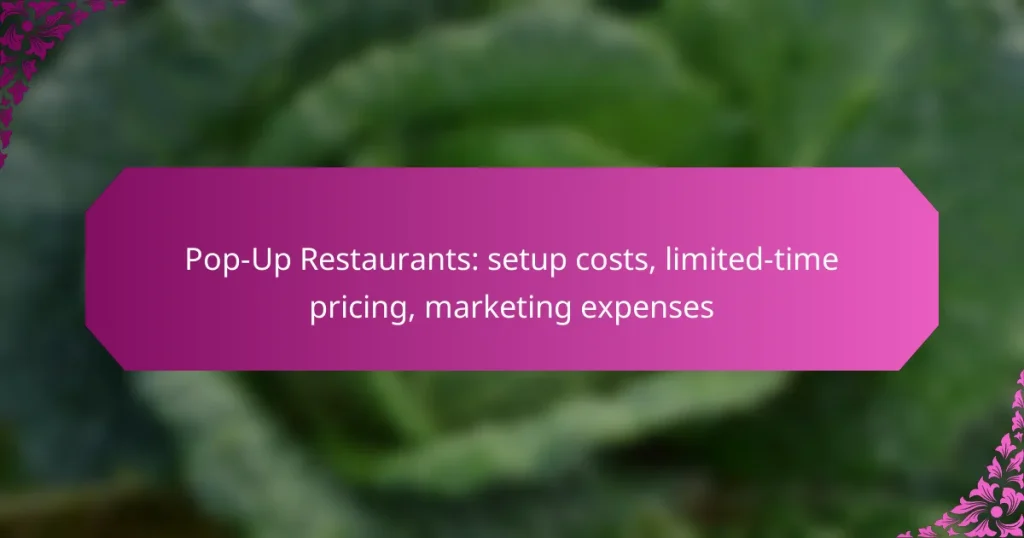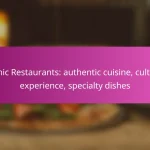Pop-up restaurants offer a unique dining experience but come with varying setup costs that can range from a few thousand to tens of thousands of Canadian dollars, influenced by factors such as location and concept. To effectively price their limited-time offerings, operators must carefully analyze costs and market demand to ensure profitability while attracting customers. Additionally, marketing expenses play a vital role in the success of these ventures, encompassing social media advertising and other promotional strategies to enhance brand visibility and draw in patrons.
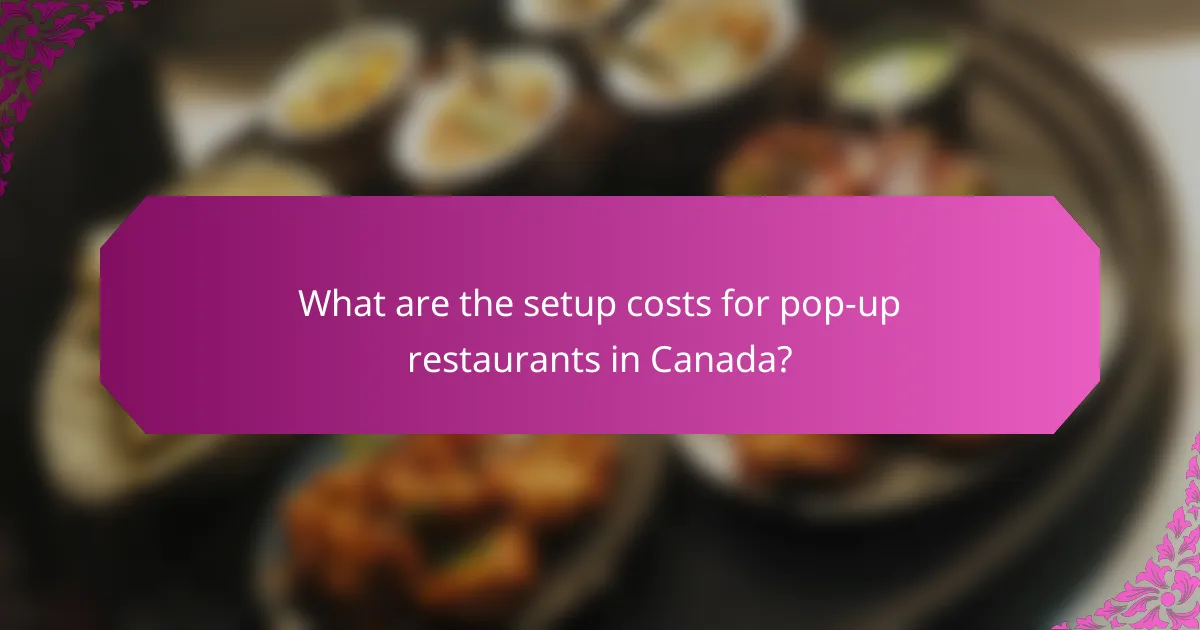
What are the setup costs for pop-up restaurants in Canada?
The setup costs for pop-up restaurants in Canada can vary significantly based on location, concept, and duration. Generally, these costs can range from a few thousand to tens of thousands of Canadian dollars, depending on the scale and complexity of the operation.
Initial investment estimates
Initial investment for a pop-up restaurant typically includes expenses for equipment, supplies, location rental, and permits. On average, entrepreneurs may expect to invest anywhere from CAD 5,000 to CAD 30,000 to get started, depending on their specific needs and market conditions.
It’s crucial to create a detailed budget that outlines all potential costs to avoid unexpected expenses. Consider factors like the duration of the pop-up and the target market when estimating your initial investment.
Equipment and supplies costs
Equipment and supplies costs can vary widely based on the type of cuisine and service style. Basic kitchen equipment such as ovens, grills, and refrigerators may range from CAD 2,000 to CAD 10,000, while smaller items like utensils and dishware can add another CAD 500 to CAD 2,000.
Consider purchasing used equipment or renting items to minimize upfront costs. Always ensure that any equipment meets local health and safety regulations.
Location rental expenses
Location rental expenses are a significant factor in the overall setup costs for pop-up restaurants. Depending on the city and the venue’s popularity, rental fees can range from CAD 500 to CAD 5,000 per month. High-traffic areas typically command higher prices.
When choosing a location, consider foot traffic, visibility, and accessibility to attract more customers. Short-term leases or agreements can help manage costs effectively.
Permits and licenses fees
Permits and licenses are essential for operating a pop-up restaurant legally. Costs for these can vary, but you might expect to pay between CAD 200 and CAD 1,500 for food service permits, health inspections, and business licenses.
Research local regulations thoroughly to ensure compliance and avoid fines. Some municipalities may have specific requirements for pop-up operations, so it’s wise to consult with local authorities early in the planning process.
Staffing costs
Staffing costs will depend on the size of your operation and the number of employees needed. For a small pop-up, you might budget around CAD 1,500 to CAD 5,000 for wages, depending on the duration and staffing levels.
Consider hiring part-time staff or volunteers to keep labor costs manageable. Ensure that all staff are trained in food safety and customer service to provide a positive experience for your guests.

How to determine limited-time pricing for pop-up restaurants?
Determining limited-time pricing for pop-up restaurants involves analyzing costs, market demand, and competition. A strategic approach ensures that prices attract customers while covering expenses and generating profit.
Market analysis for pricing
Conducting a thorough market analysis is crucial for setting effective limited-time prices. Start by researching local dining trends, customer preferences, and peak dining times. This information helps identify the optimal price range that aligns with what potential customers are willing to pay.
Consider surveying your target audience or analyzing competitors’ pricing strategies. Gathering insights from social media and food blogs can also provide valuable context on what similar pop-up restaurants charge and how they position their offerings.
Cost-plus pricing strategy
The cost-plus pricing strategy involves calculating total costs and adding a markup to ensure profitability. Begin by estimating all expenses, including ingredients, labor, permits, and marketing. Once you have a clear understanding of your total costs, apply a markup percentage that reflects your desired profit margin.
For example, if your total costs amount to $1,000 and you aim for a 30% profit margin, set your total revenue target at $1,300. This straightforward approach helps maintain financial viability while keeping pricing transparent for customers.
Competitive pricing considerations
Competitive pricing requires careful evaluation of similar offerings in your area. Analyze how your menu items compare in quality, uniqueness, and presentation. If your pop-up restaurant features gourmet or specialty items, you may justify higher prices compared to standard offerings.
Keep an eye on competitors’ promotions and pricing changes, especially during peak seasons or local events. Adjust your pricing strategy accordingly to remain attractive while ensuring that your unique selling points are highlighted to justify your price point.

What are the marketing expenses for pop-up restaurants?
Marketing expenses for pop-up restaurants can vary significantly based on the strategies employed. These costs typically include social media advertising, print marketing, and event sponsorship fees, each playing a crucial role in attracting customers and building brand awareness.
Social media advertising costs
Social media advertising is a key component for promoting pop-up restaurants, with costs generally ranging from a few hundred to several thousand dollars depending on the campaign’s scale. Platforms like Facebook and Instagram allow targeted ads, which can effectively reach specific demographics.
When budgeting for social media, consider allocating around 20-30% of your total marketing budget to this channel. Regularly monitor ad performance to optimize spending and ensure a good return on investment.
Print marketing expenses
Print marketing expenses can include flyers, posters, and business cards, typically costing anywhere from a few cents to several dollars per item. High-quality materials can enhance visibility but may require a larger upfront investment.
For effective print marketing, focus on local distribution in areas where your target audience frequents. Collaborating with local businesses for cross-promotion can also help reduce costs while increasing reach.
Event sponsorship fees
Event sponsorship fees can vary widely, often ranging from a few hundred to several thousand dollars, depending on the event’s size and audience. Sponsoring local festivals or food events can significantly boost your visibility and attract new customers.
When considering sponsorship, evaluate the event’s alignment with your brand and target market. Ensure that the potential exposure justifies the cost, and look for opportunities to engage directly with attendees, such as offering samples or hosting a cooking demo.
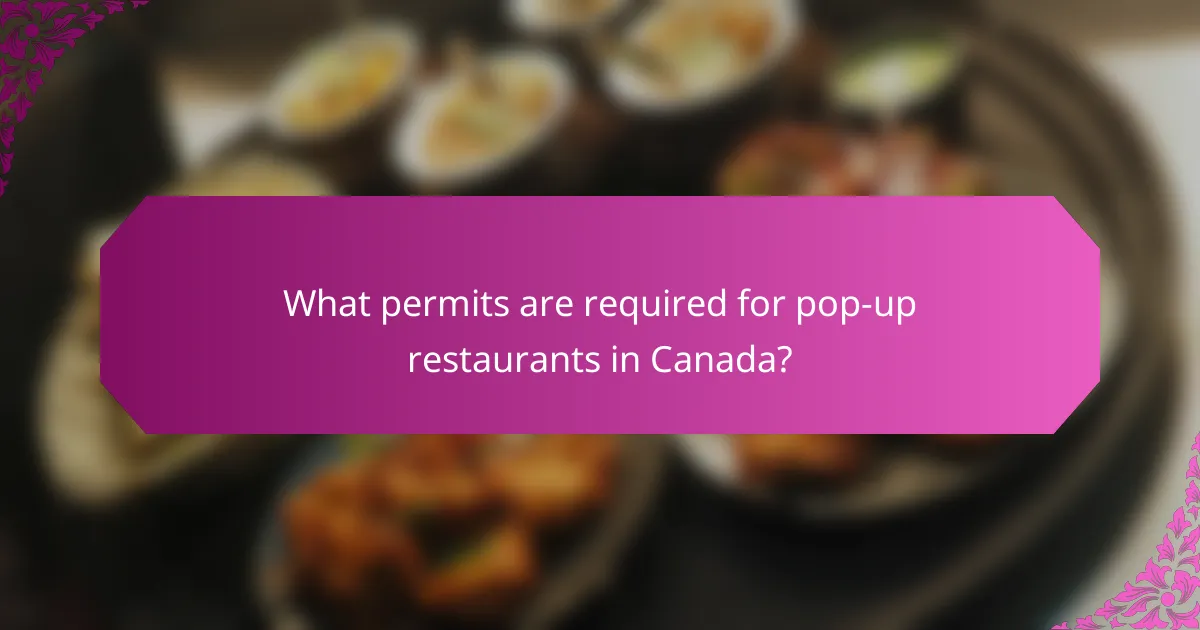
What permits are required for pop-up restaurants in Canada?
To operate a pop-up restaurant in Canada, you typically need several permits, including health and safety permits, business licenses, and food handling certifications. These requirements can vary by province and municipality, so it’s essential to check local regulations before starting your venture.
Health and safety permits
Health and safety permits ensure that your pop-up restaurant meets local health regulations. These permits often require inspections of your food preparation areas and compliance with sanitation standards. Depending on the location, you may need to submit an application and pay a fee, which can range from a few hundred to over a thousand Canadian dollars.
It’s crucial to familiarize yourself with the specific health codes in your area, as they can dictate everything from food storage practices to employee hygiene. Failing to secure the proper health permits can result in fines or even closure.
Business licenses
A business license is essential for legally operating your pop-up restaurant. This license typically involves registering your business name and may require proof of your health permits. The cost for a business license can vary widely, often ranging from $60 to $500 CAD, depending on your location and the type of business structure you choose.
Make sure to apply for the business license well in advance of your opening date, as processing times can vary. Not having a valid business license can lead to legal complications and potential fines.
Food handling certifications
Food handling certifications are mandatory for anyone involved in food preparation and service at your pop-up restaurant. These certifications demonstrate that staff understand safe food handling practices, which is crucial for preventing foodborne illnesses. Training programs are widely available and can often be completed in a few hours to a couple of days.
Costs for food handling certification courses can range from $50 to $150 CAD per person. Ensure that all staff members are certified before your opening to comply with health regulations and maintain customer safety.
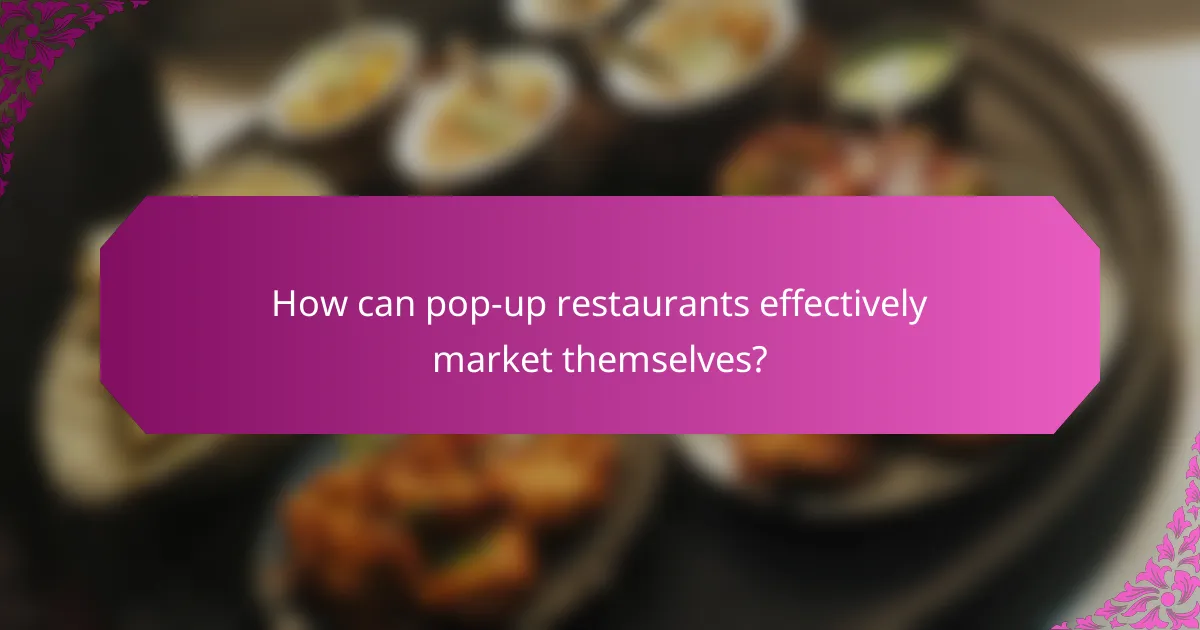
How can pop-up restaurants effectively market themselves?
Pop-up restaurants can effectively market themselves by leveraging social media, local partnerships, and unique experiences to attract customers. Engaging storytelling and strategic promotions can create buzz and drive attendance during their limited-time operations.
Utilizing Social Media
Social media platforms like Instagram and Facebook are essential for pop-up restaurants to reach their target audience. Regular posts showcasing menu items, behind-the-scenes content, and customer testimonials can generate excitement. Consider using targeted ads to reach specific demographics in your area.
Engagement is key; respond to comments and messages promptly to build a community around your brand. Collaborating with local influencers can also expand your reach and credibility.
Creating Unique Experiences
Offering unique dining experiences can set your pop-up apart from traditional restaurants. This could include themed nights, interactive cooking sessions, or collaborations with local chefs. Such experiences not only attract customers but also encourage them to share their experiences online.
Consider incorporating elements like live music or art displays to enhance the atmosphere and create memorable moments. These unique touches can lead to organic word-of-mouth marketing.
Building Local Partnerships
Forming partnerships with local businesses can amplify your marketing efforts. Collaborate with nearby breweries, farms, or artisan producers to create special events or menu items that highlight local ingredients. This not only supports the community but also attracts customers from your partners’ networks.
Participating in local events or festivals can also increase visibility. Setting up a booth or offering samples can introduce your pop-up to potential customers who may not have heard of you otherwise.
